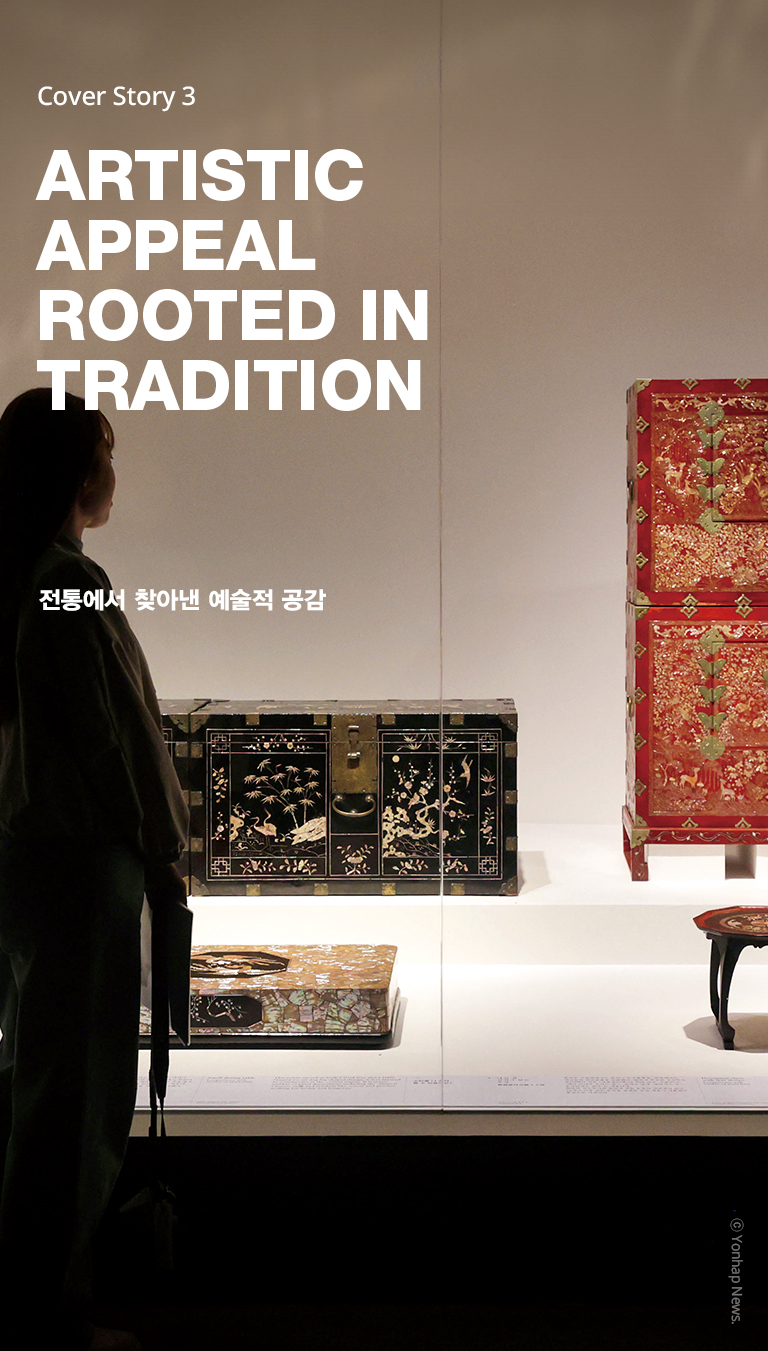
Korean craftspeople frequently offer modern reinterpretations of traditional techniques and materials in their work. Global audiences today are eager to consume Korean culture and are enchanted by the creations of Korean craftspeople that are linked to tradition. But what’s the source of that global appeal?
최근 한국 공예에는 전통 기법, 재료를 현대적으로 재해석한 표현이 많다. 세계가 한국 문화에 관심을 두고 즐기는 요즘, 한국 공예가들이 전통에서 새롭게 만든 것, 세계인들의 공감을 얻는 원천은 무엇인가.
Writer. Hong Jisu
Going to the museum has become a regular pastime in Korea for people of all ages and nationalities. Even on weekdays, museums are jam-packed with people admiring the exhibits. According to a yearly tally of visitors to major art and history museums published by “Art Newspaper,” the National Museum of Korea had 3,788,785 visitors in 2024, ranking eighth among the museums surveyed. That figure indicates that more Koreans are making traditional culture part of their everyday routines and that more foreign tourists are taking an interest in the country’s traditions as Korean pop culture continues to spread.
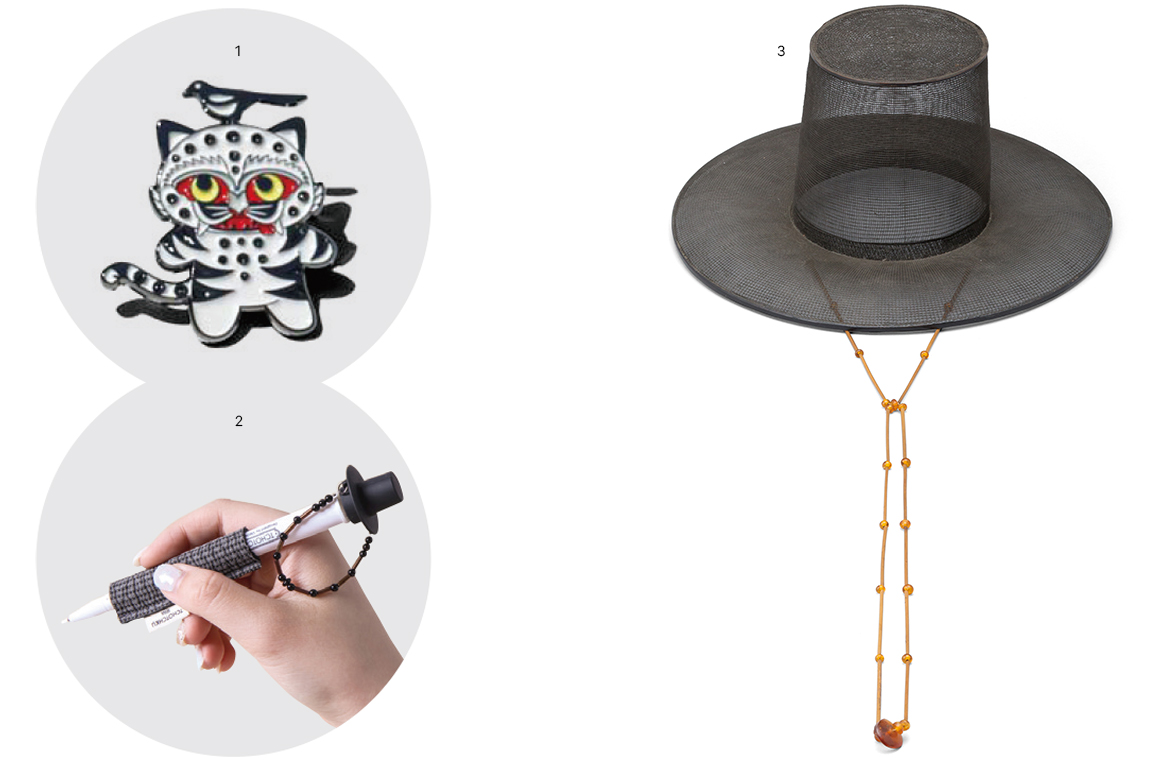 1. A MU:DS badge inspired by characters from the Netflix series “K-pop Demon Hunters,” using motifs from tigers and magpies commonly found in traditional minhwa (folk paintings) / ⓒ Natioanl Museum of Korea.
1. A MU:DS badge inspired by characters from the Netflix series “K-pop Demon Hunters,” using motifs from tigers and magpies commonly found in traditional minhwa (folk paintings) / ⓒ Natioanl Museum of Korea.
2. K-pop Demon Hunters’ MU:DS merchandise created using the gat motif / ⓒ Natioanl Museum of Korea.
3. Gat, a traditional hat worn by noblemen during the Joseon Dynasty, becomes the design motif for an item in “K-pop Demon Hunters.” / ⓒ Natioanl Folk Museum of Korea.
As it happens, tradition has been trending in Korea of late. K-pop artists have taken the lead in showcasing the country’s traditional culture and art on their social media accounts and in their music videos. They wear Hanbok (traditional clothing) in their stage sets and feature Hanok (traditional house) in their videos. Middle-aged people’s craving for a novel twist on familiar flavors and young people’s pursuit of comfort during the protracted pandemic combined to produce a newfound appreciation of tradition.
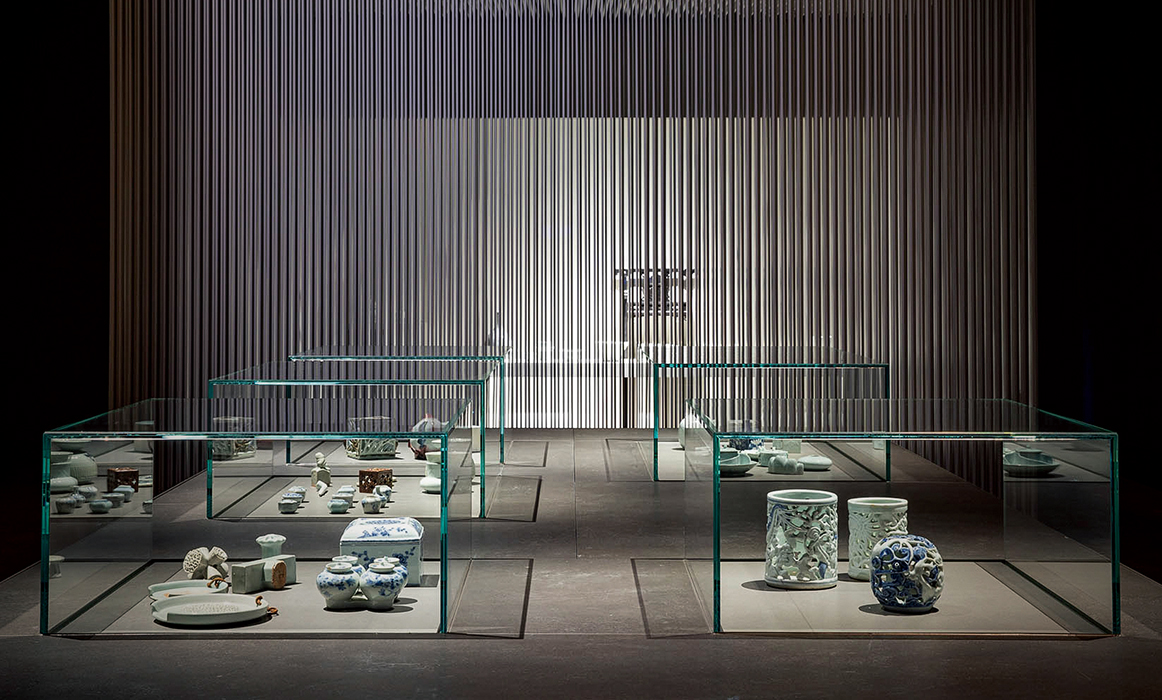 “The Buncheong Ware and White Porcelain Gallery” of the National Museum of Korea / ⓒ National Museum of Korea.
“The Buncheong Ware and White Porcelain Gallery” of the National Museum of Korea / ⓒ National Museum of Korea.
As a result, traditional merchandise produced by such institutions as the Korea Heritage Agency and the National Museum of Korea has become highly popular. These products have a kitschy vibe that young Koreans love; designs that are steeped in history, narrative and traditional culture; and snappy marketing that extends to the packaging. Taken together, that was almost guaranteed to drive value-conscious consumerism. This merchandise is also a popular choice for presents and souvenirs for foreign tourists. Consumers are now taking notice of Korean craft, which offers up tradition as a new resource for enhancing their lifestyle and updating their taste.
 Dal-hangari (moon jar) from the
Dal-hangari (moon jar) from the 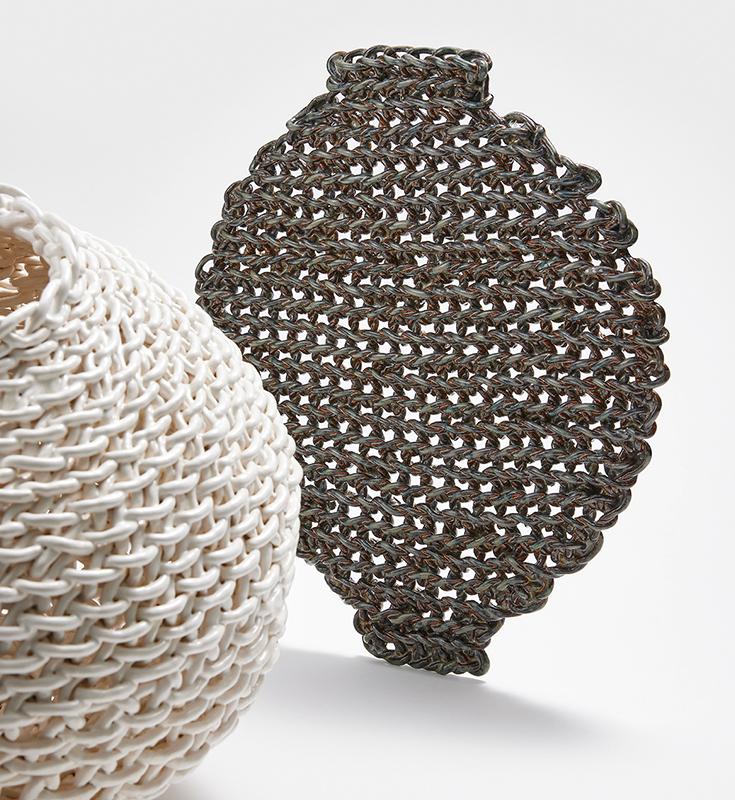 A ceramic work modeled after the dal-hangari:
A ceramic work modeled after the dal-hangari: 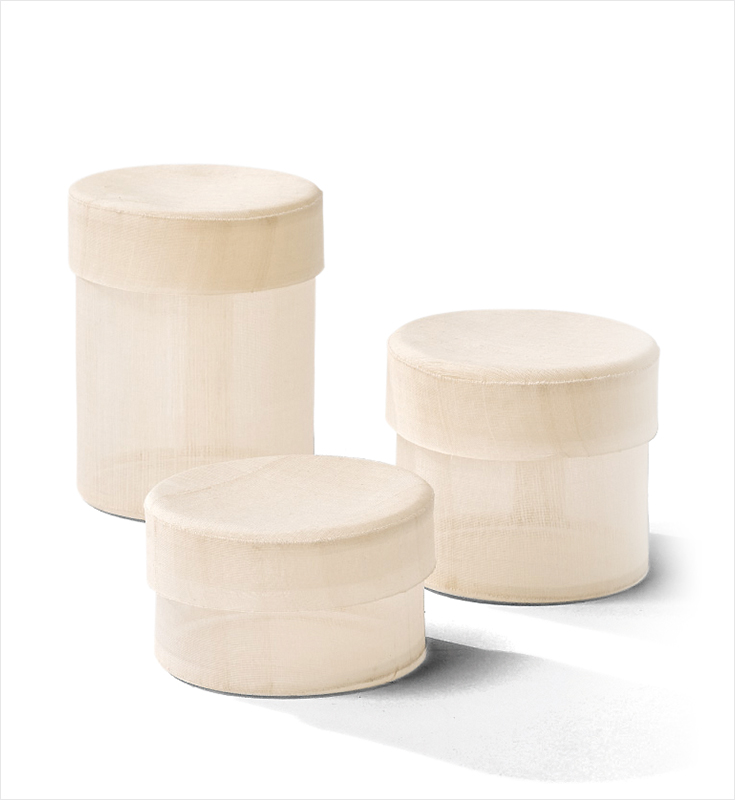 Works by Rim Seoyoon’s “White on White” series,
Works by Rim Seoyoon’s “White on White” series, Aestheticians define Korean art in various ways, but one point on which they generally agree is the beauty of simplicity. The Chinese pursued grandeur, extravagance and exaggeration, while the Japanese preferred a restrained symmetrical beauty that valorized brevity and regularity. In contrast, Korean art is characterized by purity and simplicity of color and arrangement, while eschewing over-the-top ornamentation. It strikes a balance between strength and weakness, aspiring to modesty and resisting the urge to overpower. Craftspeople of the past adopted an attitude of down-to-earth honesty while avoiding flashy displays of skill that might come across as artificial. That attitude can be observed throughout Korean architecture, art and craft.
 (Left) Baguni, copper, 30×30×24 cm, 2025
(Left) Baguni, copper, 30×30×24 cm, 2025
A work by Ryu Yeonhui that became a finalist for the 2025 LOEWE FOUNDATION Craft Prize ⓒ LOEWE FOUNDATION.
(Right) A Soft Landscape, Hanji (traditional paper) and flour paste, 92×80×64 cm, 2024
A work by Lee Jeongin, finalist for the 2025 LOEWE FOUNDATION Craft Prize ⓒ LOEWE FOUNDATION.
Those are not the only unique aesthetic elements in Korean art. There’s also a keen sense of humor. Playful expression can be found not only in literature, folk paintings, embroidery, ceramics and architecture, but also in more intangible cultural heritages such as talchum (mask dance). In Korean folk paintings, one might expect the tiger to be depicted as fierce and solemn, as an amulet against evil forces. But in fact, the tiger is generally presented as childish or even comedic. “White Porcelain Bottle with String Design in Underglaze Iron,” a 16th century piece from the Joseon Dynasty, depicts the kind of string that would have been used to tie the bottle around one’s waist. What a perfect artistic representation of Koreans’ characteristic innocence and playfulness.
Korean crafts were particularly noted for pursuing harmony with their surroundings: knowing one’s place while avoiding both excess and insufficiency. Art historian Choi Soon-woo (1916–1984) praised the rounded contours of Korea’s white porcelain dal-hangari (moon jars), ascribing to them an innocent, unadorned and good-hearted charm. He drew attention to the preference for gentle, flowing curves over straight lines—as exemplified by celadon maebyeong (prunus vase), pointed beoseon (socks) and Hanok eaves—in his discussion of the unique aesthetic implications, abundance and subtlety of Korean art. According to Choi, these characteristics derive from Koreans’ distinctive scent, sentiments, emotions and lifestyle reflecting the natural refinement inherent to Koreans.
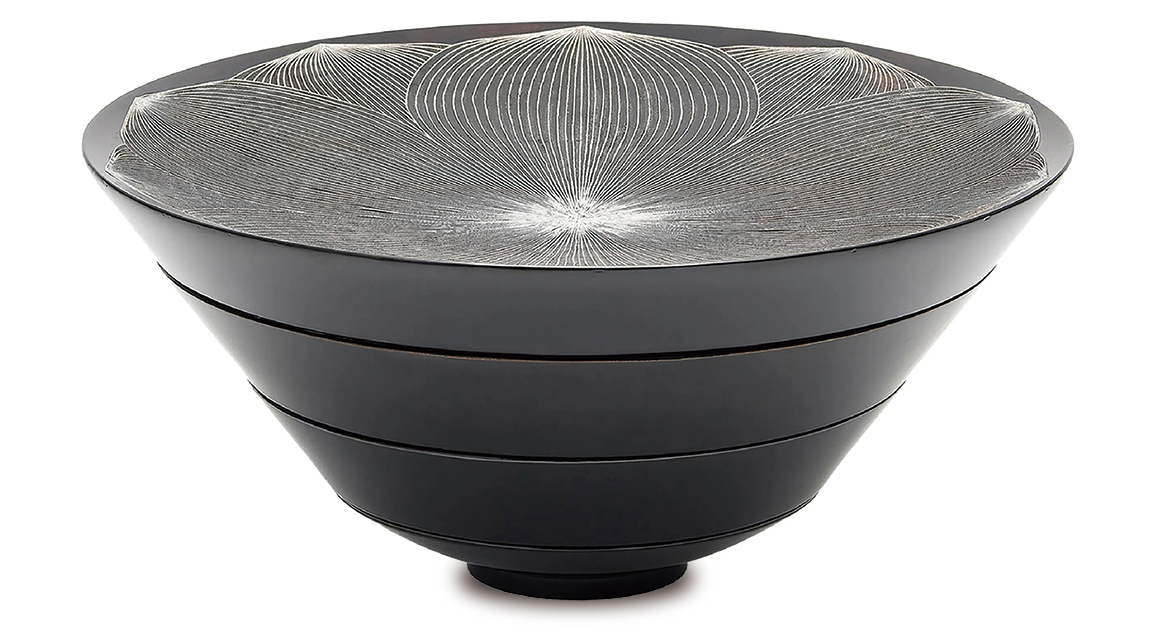 Embracing Lotus, iron, fine silver, lacquer, 32×32×15 cm, 2025
Embracing Lotus, iron, fine silver, lacquer, 32×32×15 cm, 2025
A work by Shin Sunyi, finalist for the 2025 LOEWE FOUNDATION Craft Prize ⓒ LOEWE FOUNDATION.
Korean contemporary craftspeople have adopted a wide range of work methods that include digital devices, artificial intelligence and innovative materials. However, they remain faithful to the typical characteristics of Korean art—namely, a simple aesthetic of lowkey naivety, fidelity to the original properties and purpose of the materials used, and sincerity in their selection and handling. The guiding philosophy of Korean contemporary craft is to draw ideas and materials from tradition while prioritizing its spirit, rather than its trappings, and to actualize those ideas in sophisticated forms attuned to the sensibility, taste and needs of people today. The emphasis on tradition in original Korean crafts also aligns with the contemporary interest in vintage goods and antiques, an attitude captured by the phrase “old but gold.”
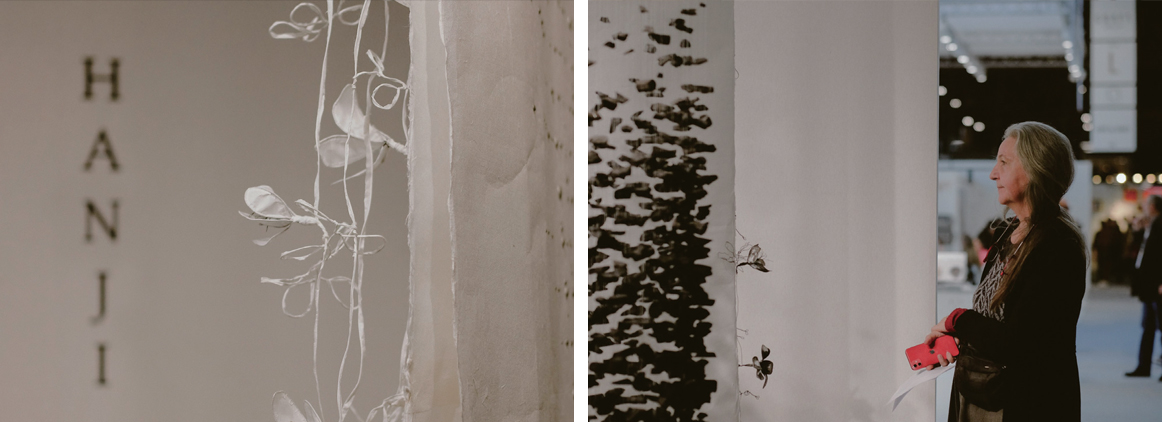 The 2024 Hanji exhibition “Skin of Time, HANJI” at Maison&Objet, Paris, France / ⓒ Korea Craft and Design Foundation.
The 2024 Hanji exhibition “Skin of Time, HANJI” at Maison&Objet, Paris, France / ⓒ Korea Craft and Design Foundation.
Korean craft is being showcased around the world. Global luxury brands have been singing the praises of handicrafts recently, placing them front and center in brand promotions and store decorations. Those campaigns have created opportunities for Korean craftspeople to demonstrate their skills. Over the past few years, crafts by Korean artisans have garnered attention and earned favorable reviews at such art shows as Collect in the United Kingdom, Maison&Objet in France and Milan Design Week in Italy. Multiple Korean artists have been selected as finalists or winners of Spain’s LOEWE FOUNDATION Craft Prize, which honors craftsmanship in leatherwork and other areas, elevating the global status of Korean craft. In effect, the work of Korean craftspeople and the superior skill, artistic taste and traditional sensibilities they embody are being recognized for their celebration of analog values and their legacy of craftsmanship, resisting the limitations of mechanization and digitalization.
Korean craftspeople’s efforts to reinterpret tradition in their novel creations demonstrate the universality and relatability of Korean art to people around the world.
Writer. Hong Jisu
After majoring in ceramics and handicrafts, Hong received a doctorate in art criticism. She has organized numerous exhibitions and is an art critic and cultural columnist for art journals and culture websites both in Korea and other countries.